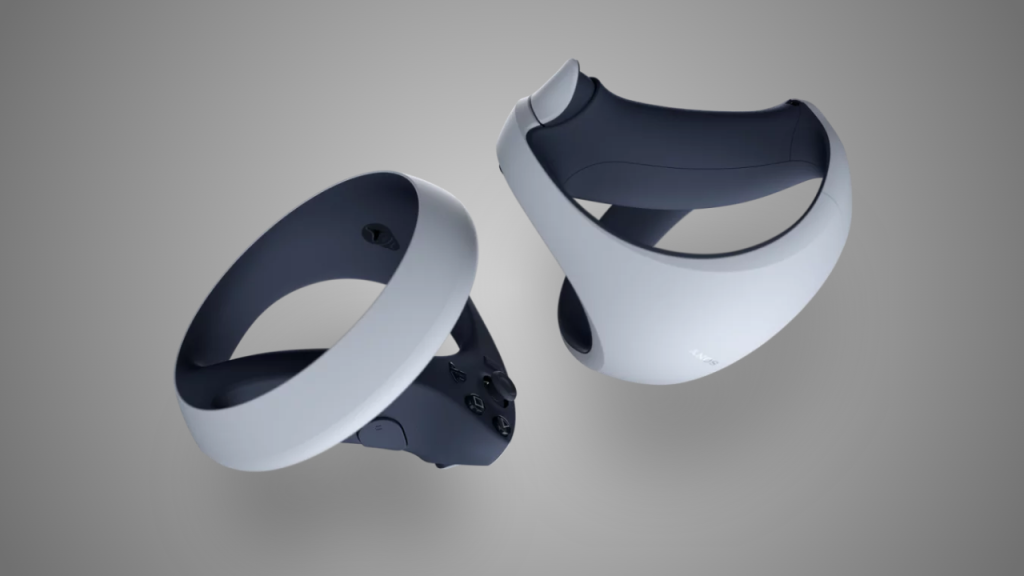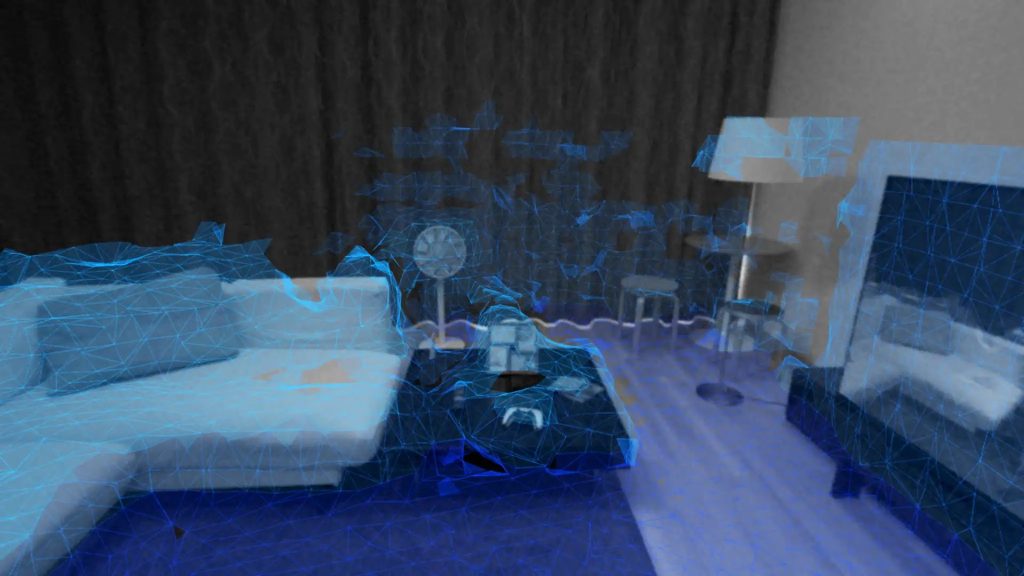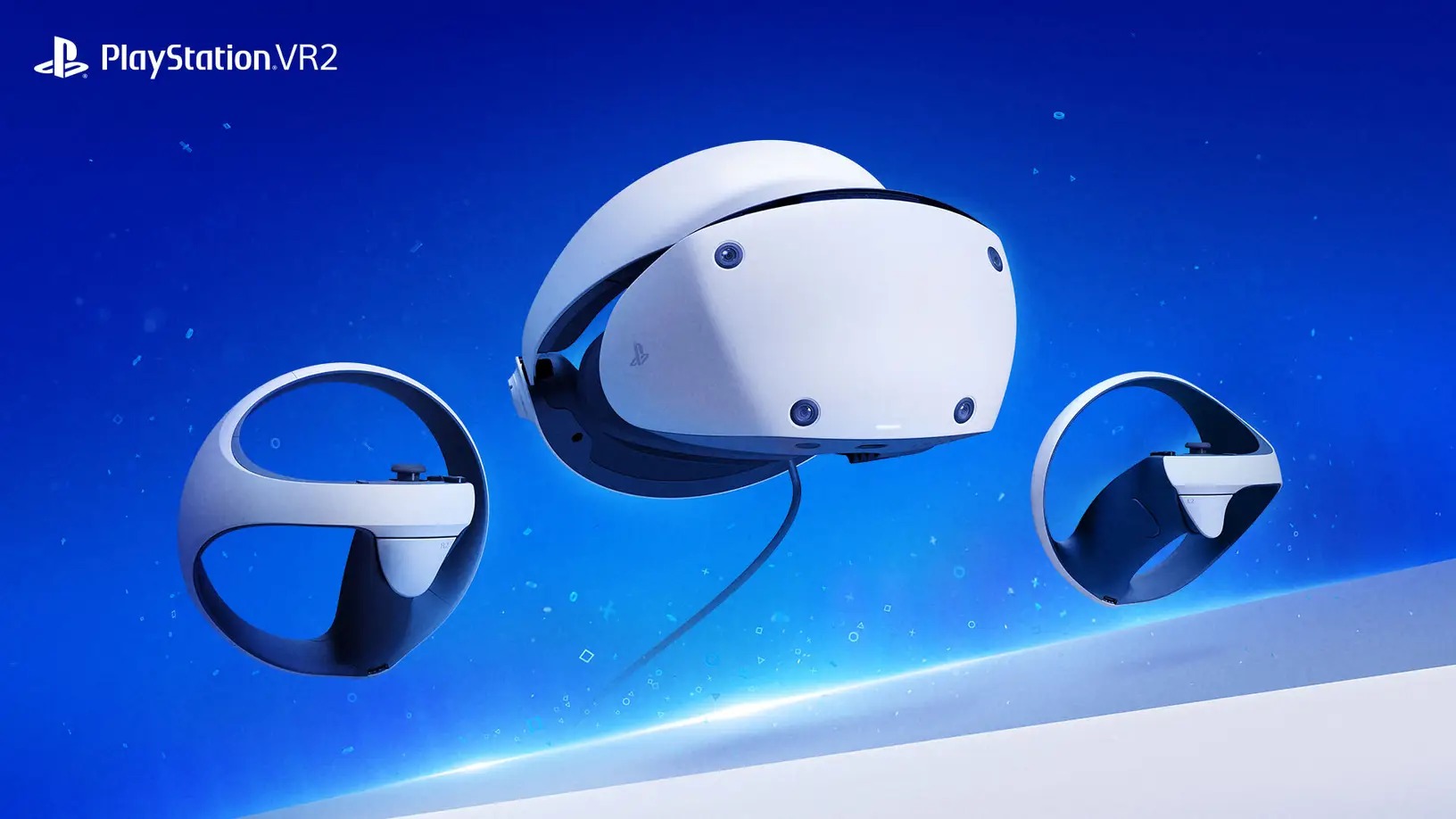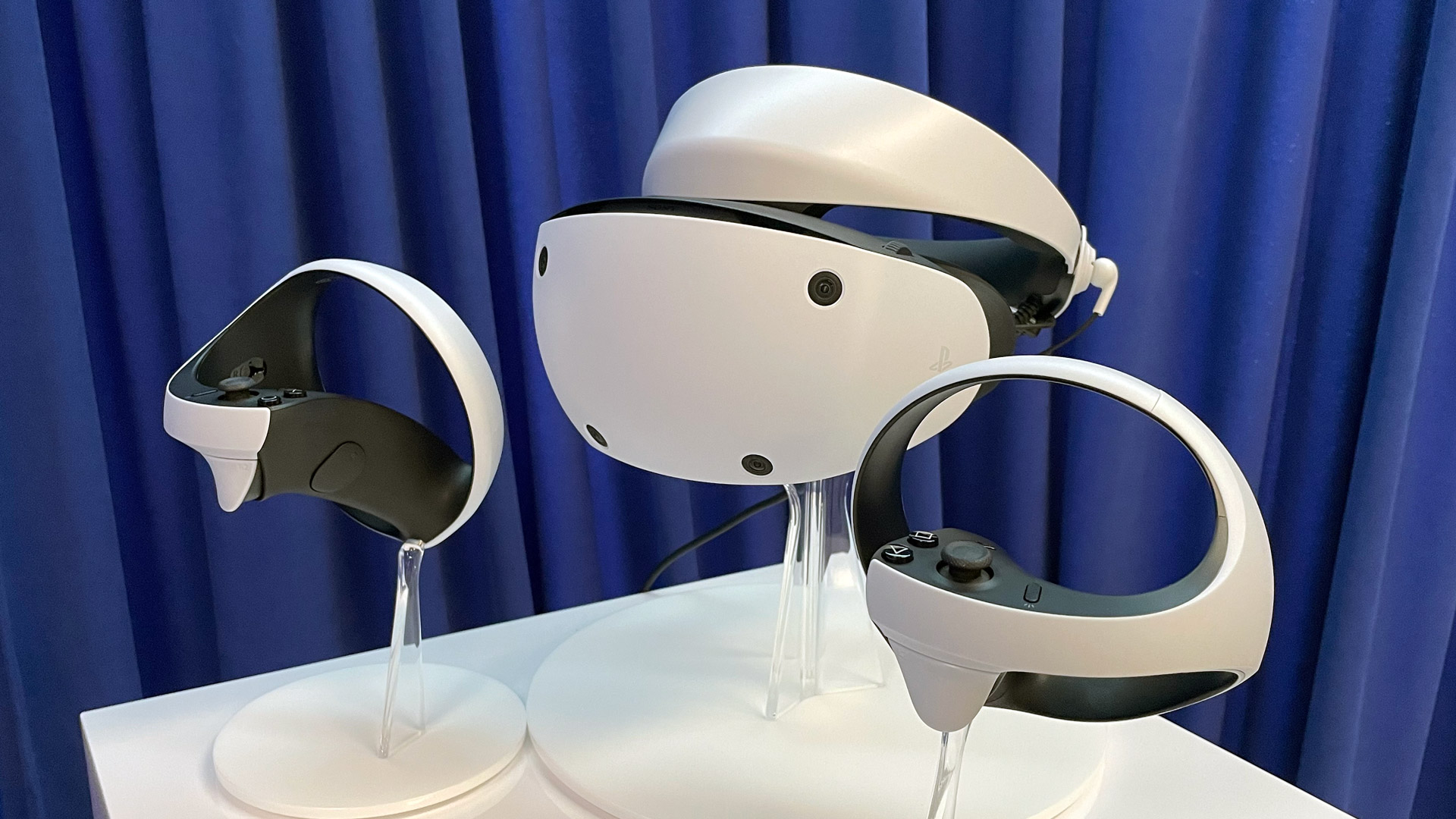PlayStation VR2 Review
Overall
-
Design
-
Software
-
Specifications
Verdict
The PlayStation VR2 is a thoroughly excellent headset with a lot to love, It is better than its predecessor in every single way, but the price point may be a bit too steep for some.
Pros
- 4K Display
- Extremely Comfortable
- 3D Scan Tech
- Superior Eye Tracking
Cons
- High Price
- Lack Of Enough Games
The PSVR 2 has been a hot topic in the gaming industry for quite some time now, and our PlayStation VR2 Review hopes to add to that discussion.
Because while the first iteration of Sony’s headset was a valiant effort, it left a lot to be desired. It was almost as if the company was playing catch-up with the emerging trend, and the controllers were outdated even before the PS4 was released.
However, the first headset did serve as a catalyst for the widespread adoption of virtual reality in gaming, fuelling desires for an even more immersive experience.
And now, Sony has come out with a sequel, which marks their second attempt at creating a more immersive gaming experience through the power of the PS5. But the big question is whether the hardware is just a simple sequel to the original with minor improvements, or if it will deliver something truly innovative?
Design

The headset packs quite a punch in terms of its display. While its predecessor had to make do with a 1080p resolution, the PSVR 2 has a 4K display that boasts a 2000 x 2040 resolution per eye. As a result, everything appears crisper and sharper than ever before. But that’s not all – the displays also comes with a 90Hz to 120Hz refresh rate, and at 110 degrees, the field of view (FOV) is quite impressive too.
This is not a massive improvement over the 100 degrees of the first PSVR, but it’s still noticeable when compared side by side. Additionally, the Fresnel lenses that Sony has used are incredibly effective in avoiding god rays, something that has plagued other VR headsets, like the original HTC Vive.
The Sense Controllers of PlayStation VR 2 are nothing short of a fusion between the Meta’s Touch controller and the DualSense 5. It’s like a wish come true when compared to the original PSVR’s Move controllers.
Sony has seamlessly integrated the Touch controller design with an analog stick, two face buttons, a menu share button, a grip button, and a trigger button. The adaptive trigger gives the sensation of pressure and tension when pressing in-game buttons similar to the DualSense.
Furthermore, it relies on capacitive touch technology, allowing it to sense your fingers and map them to in-game hands and fingers. It may not be as accurate as you would expect because it may occasionally map the wrong fingers, however, it is not a significant hardware problem, and it does not detract from the experience.
The setup is a piece of cake compared to the previous version. The headset comes with some essential components – a pair of Sense Controllers, earbuds, and a USB-C cable. The controllers are also equipped with the DualSense perks of the PS5 and offer a similar design to Meta Quest 2 controllers.
Gone are the days of clunky cables and weird breakout boxes – the PlayStation VR 2 only needs one USB-C cable to connect to your PS5, and voila! It’s ready to use. The firmware update is also automatic, so no need to stress about it. Additionally, the tutorial prompts guide the users through the setup process and usage of the VR headset.
The coolest part of the PSVR 2 is undoubtedly when it 3D scans the surrounding area using its four front-facing cameras and creates a safe space for the player to move around in. It’s a surprisingly satisfying experience to watch the room as an array of geometric shapes.
Of course, not every player will have the opportunity to experience it since it requires a well-lit room to map the surroundings accurately. Furthermore, this safe space can be manually edited and customized as needed.

PSVR 2 is not just good-looking, but also a comfy fit. It’s got the same dual-tone colors as the PS5 which gives off a luxury vibe. Sony’s definitely made an effort to make it look and feel like a high-end product. The design is simple yet elegant, and the real question is whether it’s just good-looking or actually good.
To be honest, it’s actually good. The headband comes with rubber gaskets and padding at the back, which is a lot better than the Meta Quest 2 where the padding costs extra. The weight of the headset is distributed evenly around the head, so it doesn’t strain your neck like those old headsets used to.
There’s a dial at the back of the band that can be used to adjust the tightness of the band, a real lifesaver for us glasses wearers. You can also adjust the lens separation using a scroll wheel located on the top left corner of the visor.
The rubber gasket on the visor is large enough for the glasses to fit in, which is a feature that people like me have been waiting for. But sometimes, the glasses touch the lenses during adjustments, which can be a minor inconvenience at best.
Sony has included a pair of earbuds in the box as well. They might not be the best, but the unique design allows them to sit comfortably along the headband so they won’t dangle around your neck.
And, if you’re not satisfied with the earbuds, there’s a headphone port available for any wired earbuds. Plus, you can always connect your wireless headset directly to your PS5 using its dongle.
The headset comes with another feature – haptic feedback which adds to the immersion of the experience. Under the visor, there’s a button that can be pressed to activate the see-through mode, allowing you to see your surroundings. It’s not a colored feed and it’s not crystal clear, but it’s a good enough black-white video feed.
Software

The PlayStation VR 2 is packed with a plethora of incredible features that are sure to give it an edge over its competitors. One of the most noteworthy features is the inside-out tracking system, which is already being used by other VR headsets.
PSVR 2’s implementation eliminates the need for a separate tracking camera, which was a nuisance in the previous model. Not to mention, users had a habit of inadvertently blocking the camera, which made it less effective. With inside-out tracking, the headset and controller tracking is more accurate and efficient than ever before.
Another game-changing feature of the is Eye Tracking. This revolutionary technology has the potential to take VR gaming to a whole new level. Imagine playing a horror game where monsters suddenly appear when you blink.
However, Eye Tracking isn’t just for gaming. Sony has already put it to good use in the form of Foveated Rendering – a technique that uses eye tracking to reduce the amount of detail in the periphery of the user’s field of vision.
By reducing the detail in these areas, the kit can render the center of the user’s field of view at a higher resolution.
Simply put, only the areas where the user is directly looking will be rendered in full while the details in other unfocused areas will be reduced. This can improve the overall visual quality of the VR experience and reduce the processing power required to render environments.
The combination of eye tracking and foveated rendering is expected to greatly enhance the virtual reality experience on the PSVR 2. By allowing for more accurate and efficient rendering, these features should help to create a more immersive and comfortable experience.
Specifications

The PlayStation VR 2 is more than just a mere sequel to its predecessor, but rather an entirely new system that promises to deliver an exceptional gaming experience. Its spec sheet alone suggests that it’s equipped with everything a player could ask for or expect.
While PC VR kits already offer pleasing graphics, they may lack certain necessary features that make them stand out from other available VR options. With the PSVR 2 however, it seems like Sony has focused on addressing those shortcomings to create a more comprehensive VR solution.
|
Display |
4K OLED |
|
Refresh Rate |
90Hz, 120Hz |
|
Field of View |
110 Degrees |
| Feedback |
Haptic feedback on Controllers and Headset |
| Connectivity |
USB-C |
|
Sensors |
|
|
Features |
|
|
Weight |
560g |
|
Price |
$549.99 |
But is it all worth the price tag? It’s definitely not typical mobile tech with outdated displays and a narrow field of view. This thing is equipped with top-notch hardware, making it arguably the best VR headset on the market right now.
Sure, it might seem a bit expensive, and the fact that you need a PS5 to run it doesn’t make it any cheaper. But let’s be real, $1050 for the PSVR 2 seems the right choice compared to shelling out over $1000 for a PC setup with the same level of VR experience.
However, Sony did have to make some tradeoffs, starting with the biggest one, which is the USB-C chord. As we mentioned earlier, the PSVR 2 setup is hassle-free without the breakout box, making it a simple plug-and-play kind of deal. But, you’ll notice the 4.4m cord wrapped around or getting in the way.
The more pressing issue, though, is the potential for your PS5 to be unceremoniously yanked off its stand or the USB-C connector to become irreparably bent.
And while wireless connections might have seemed like the obvious solution, the resulting latency would have made for an even worse problem. So, in the end, it’s a fair tradeoff – one that Sony had to make to ensure the best possible VR experience.
Verdict

The PlayStation VR 2 finds itself in an awkward situation. Sure, it boasts new hardware and top-notch quality, but there are only a handful of exclusive titles available at launch. In fact, the only notable exclusive title is Horizon Call of the Mountain.
The rest of the games are all older titles, and what’s even more disappointing is that none of them are compatible with the headset due to major hardware upgrades. This means you’ll have to pay $5-10 more for the upgraded version of these titles.
Although there haven’t been any announcements regarding significant exclusive titles, we remain optimistic about a surge of games to hit the platform.
There are many developers out there with the potential to deliver some exceptional gaming experiences. Meanwhile, the hardware itself is nothing short of impressive, delivering an experience that is akin to what one would expect from a high-end PC without the need for one.
This has been our PlayStation VR2 Review. While you’re here, consider checking out some of our other articles.
- DualSense Edge Review
- Atomic Heart Review
- Wild Hearts Review
- Like A Dragon: Ishin! Review
- Returnal Review
- Wanted: Dead Review
Thanks! Do share your feedback with us. ⚡
How can we make this post better? Your help would be appreciated. ✍



